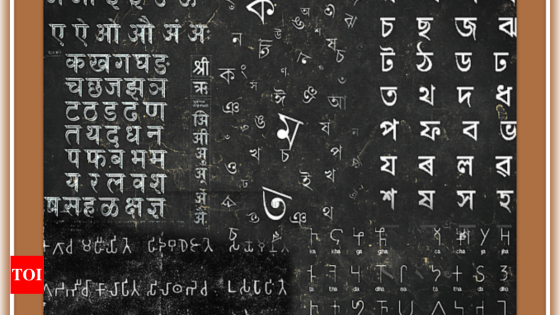The Union Cabinet on Thursday expanded the list of India’s ‘Classical Languages’ to 11 by including Marathi, Pali, Prakrit, Assamese and Bengali in it. Tamil, Sanskrit, Telugu, Kannada, Malayalam and Odia were already members of this league. Tamil was the first to get ‘classical’ status in 2004, while Odia, the sixth, got it in 2014.
“Classical Languages serve as a custodian of Bharat’s profound and ancient cultural heritage, embodying the essence of each community’s historical and cultural milestones,” Union minister Ashwini Vaishnaw said.
How is a language selected for ‘classical’ status?
The category of ‘Classical Languages’ was created on Oct 12, 2004, with Tamil being the only entry. In November that year, the ministry of culture created a Linguistic Experts Committee (LEC) under the Sahitya Akademi to examine the eligibility of other possible contenders. Sanskrit was declared a ‘Classical Language‘ in 2005, Telugu and Kannada in 2008, and Malayalam and Odia in 2013 and 2014, respectively.
A govt press release says selection criteria for a ‘Classical Language’ have been revised twice since 2004, the last time in July this year. These are:
- High antiquity of (its) early texts/recorded history over a period of 1,500-2,000 years.
- A body of ancient literature/texts which is considered a heritage by generations of speakers.
- Knowledge texts, especially prose texts in addition to poetry, epigraphical and inscriptional evidence.
- The ‘Classical Language’ and literature could be distinct from its current form or could be discontinuous with later forms of its offshoots.
- The lder criterion that a language’s “literary tradition be original and not borrowed from another speech community” has been dropped.
What changes for language after gaining ‘Classical’ status?
The govt promotes the study and preservation of ‘Classical Languages’.
- Two major annual international awards for scholars of eminence in classical Indian languages.
- A Centre of Excellence for Studies in ‘Classical Languages’ has been established to support advanced research.
- University Grants Commission (UGC) is requested to create professional Chairs in central universities to support the study of ‘Classical Languages’.
For example, in 2020, three central universities – Rashtriya Sanskrit Sansthan, New Delhi; Rashtriya Sanskrit Vidyapeetha, Tirupati; and Sri Lal Bahadur Shastri Rashtriya Sanskrit Vidyapeeth, New Delhi – were established to promote Sanskrit. Likewise, the Central Institute of Classical Tamil was set up to facilitate the translation of ancient Tamil texts, promote research and offer courses for university students and language scholars of Tamil. Centres of excellence for studies in classical Kannada, Telugu, Malayalam, and Odia were established under the Central Institute of Indian Languages in Mysuru.
States with ‘Classical Languages’, such as Odisha and Tamil Nadu, are entitled to annual grants for the study, research and promotion of their languages.
How Marathi, Bengali, Assamese got this status
In July 2013, a committee headed by Prof Rangnath Pathare submitted a report to the Centre. Professor Hari Narke, coordinator of the 10-member committee that gathered evidence to show that Marathi is at least 2,300 years old, said, “It is a wrong perception that Marathi is an offshoot of Sanskrit or that it is merely 800-1,000 years old.” Narke said the committee submitted 80 pieces of documentary evidence to show that Marathi is an original language.
In 2023, the state higher education department of the West Bengal govt established the Institute of Language Studies and Research (ILSR) to advance knowledge in language studies, translation and cultural research. The institute gathered evidence for two years and prepared a draft that was submitted to the Centre. West Bengal CM Mamata Banerjee wrote to PM Modi in 2024, urging the acceptance of Bengali as a classical language.
Assam CM Himanta Biswa Sarma on October 1 said his govt is in “regular contact” with Modi and the Centre to recognise Assamese as a ‘Classical Language’. On his X handle, Sarma stressed why it should be granted ‘Classical Language’ status.
Is conferring this status also a political tool?
Conferring ‘classical’ status on a language has political implications, particularly during the election season. Recognising the cultural heritage of a specific linguistic group allows parties to garner support in regions where language defines identity.
Language has long been a significant tool in identity politics. For example, the UPA-led Centre accorded ‘Classical Language’ status to Tamil after the DMK-led alliance swept the 2004 state elections. DMK patriarch M Karunanidhi offered support to Manmohan Singh’s UPA govt on condition that Tamil be granted the status of a ‘Classical Language’.
Five of the first six ‘Classical Languages’ – barring Sanskrit – were spoken in South India. This time, the states whose languages have been chosen form a belt from west to east: Maharashtra (Marathi), Madhya Pradesh, Uttar Pradesh and Bihar (Pali and Prakrit), West Bengal (Bengali), and Assam (Assamese).
Was Marathi included with eye on Maharashtra polls?
The first proposal to include Marathi in the list came from a Congress-led Maharashtra govt in 2013. The decision has come a decade later when BJP and its allies run both the Centre and the state. It’s also timed very close to the state elections. Political observers say this decision can be used to seek votes in the name of Marathi asmita (Marathi pride).
Do such titles create language hierarchies?
Rating languages can give rise to the perception that some languages are more prestigious or culturally significant than others, especially in a multilingual country like India. The Marathi versus non-Marathi political narrative in Maharashtra that has fuelled several elections is a classic case of language hierarchy in the state. Sentiments against Hindi and Gujarati are reinforced during the elections. Even down south, leaders of political parties in Tamil Nadu, including the late M Karunanidhi, criticised the Union govt’s attempts to promote Sanskrit in schools by mandating the three-language formula.
Source Agencies



